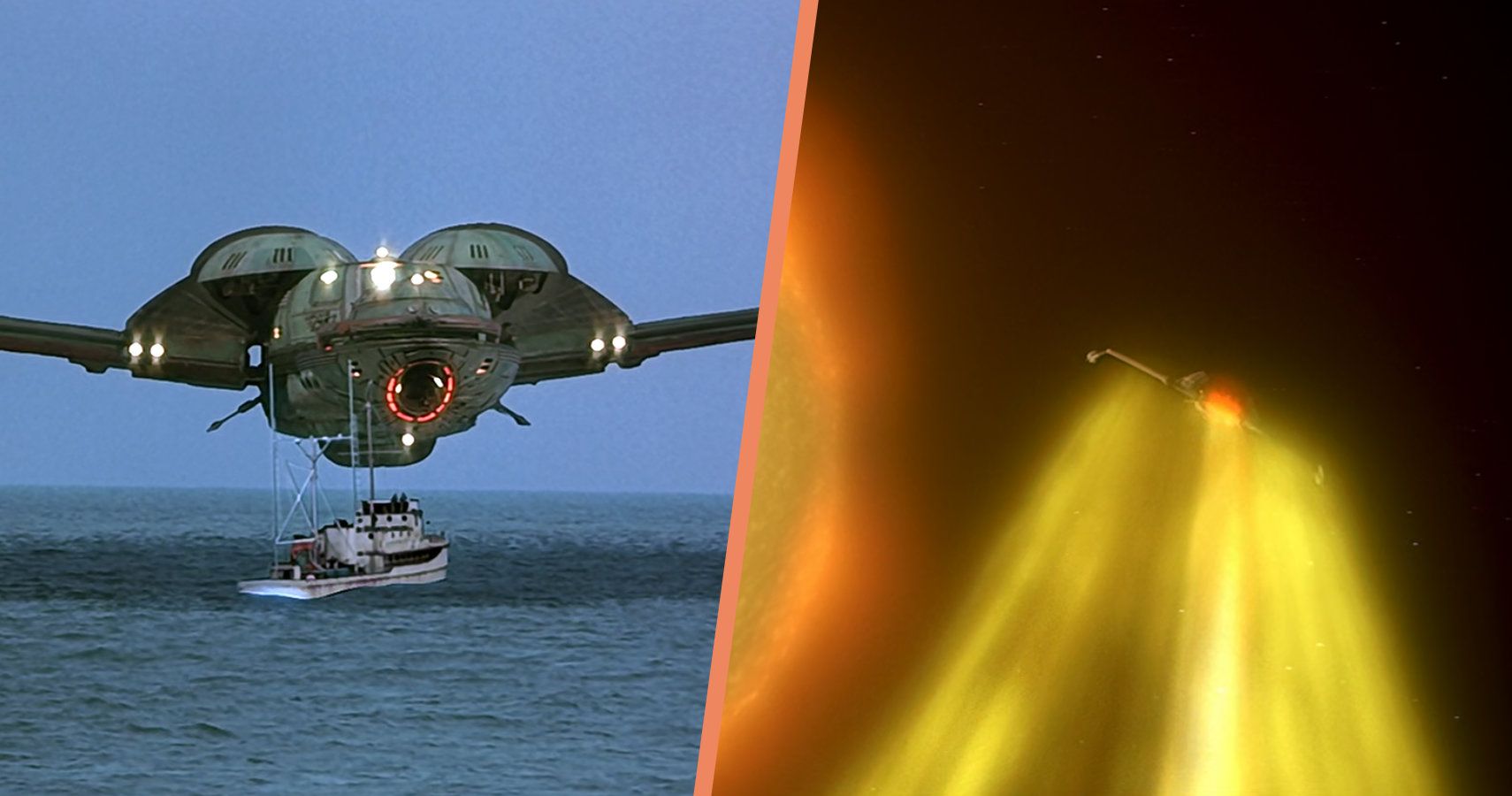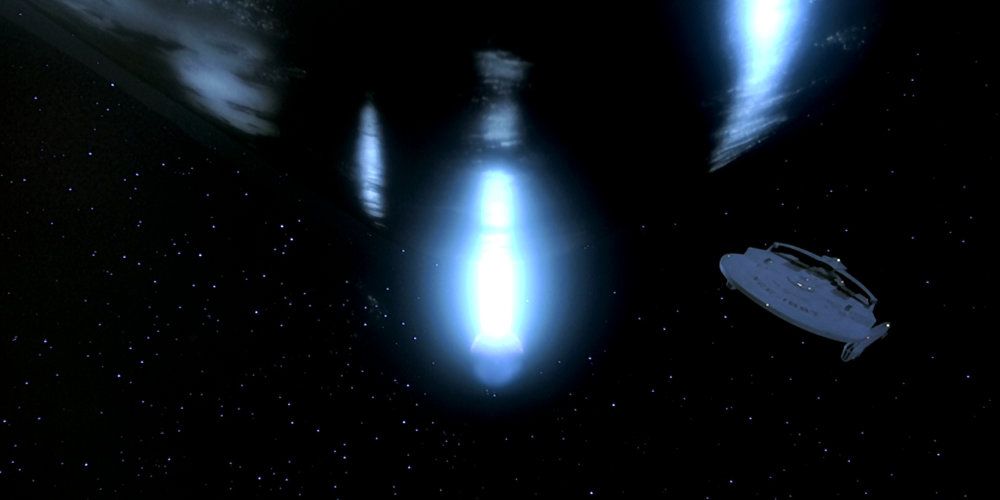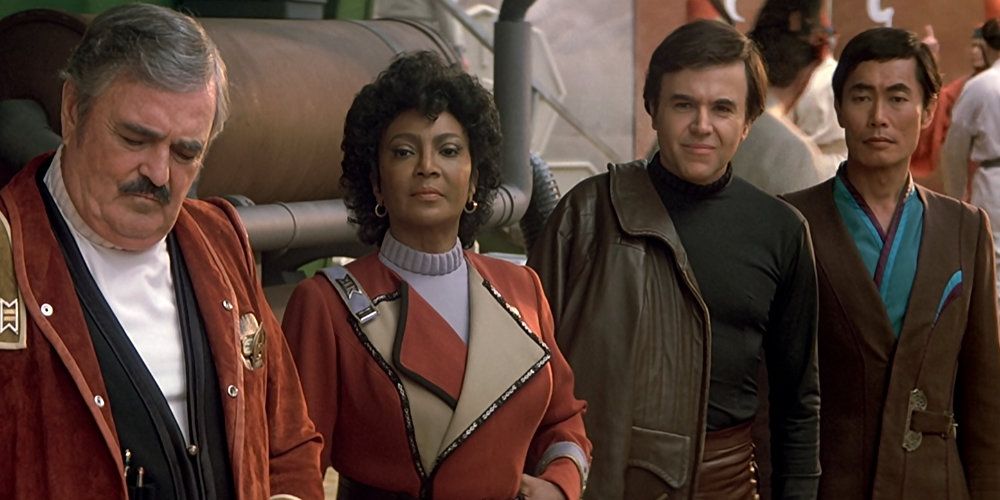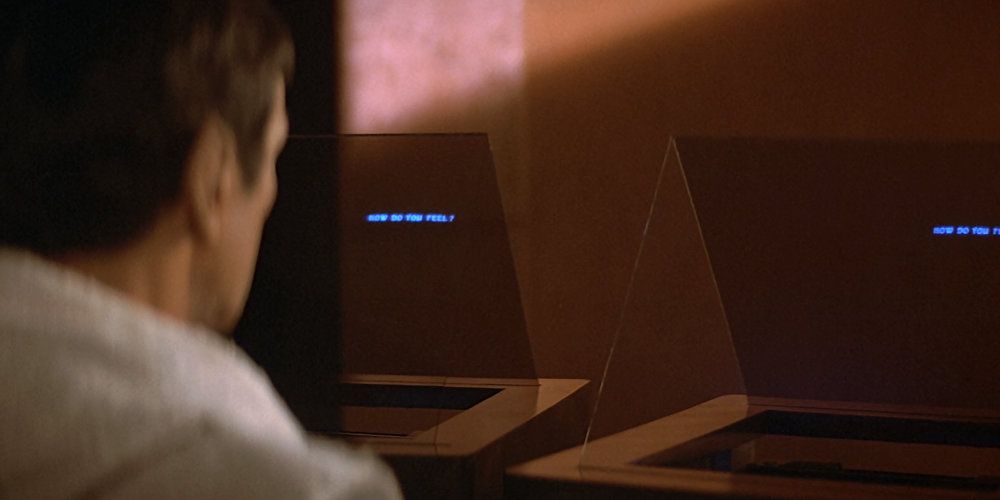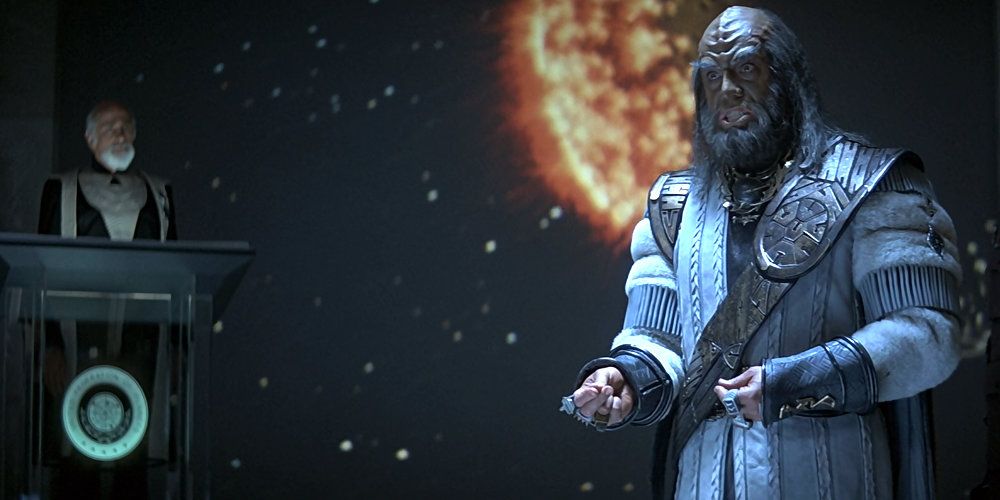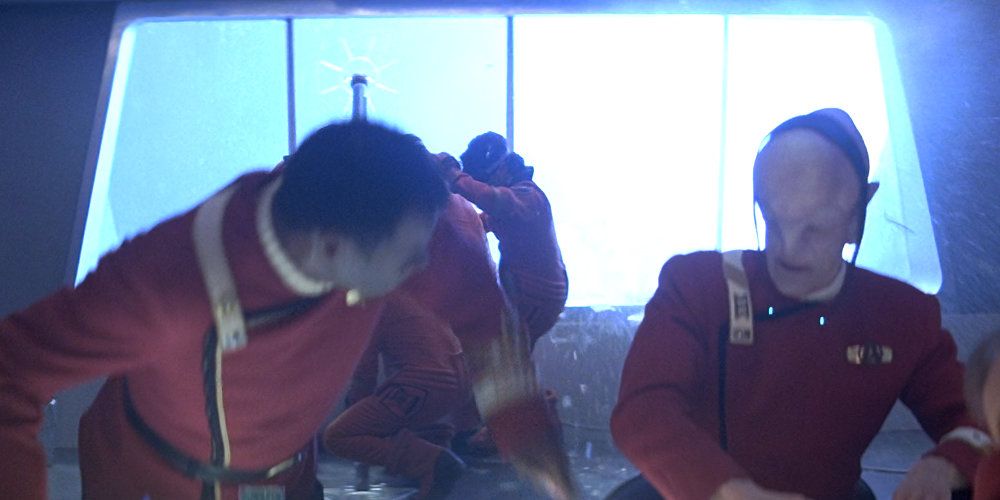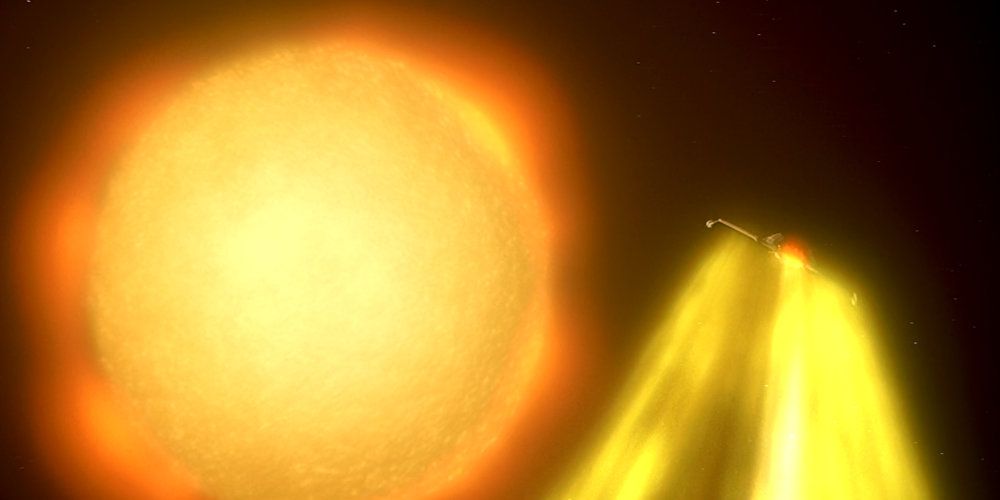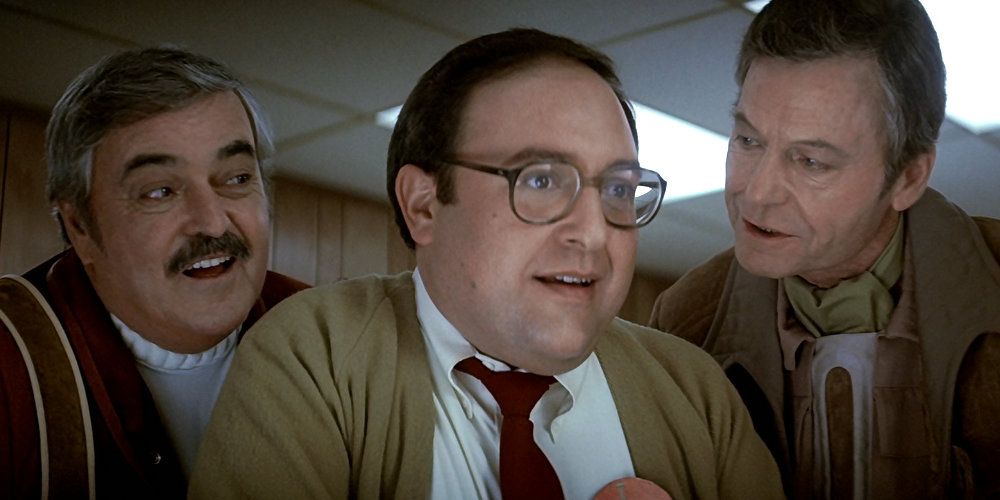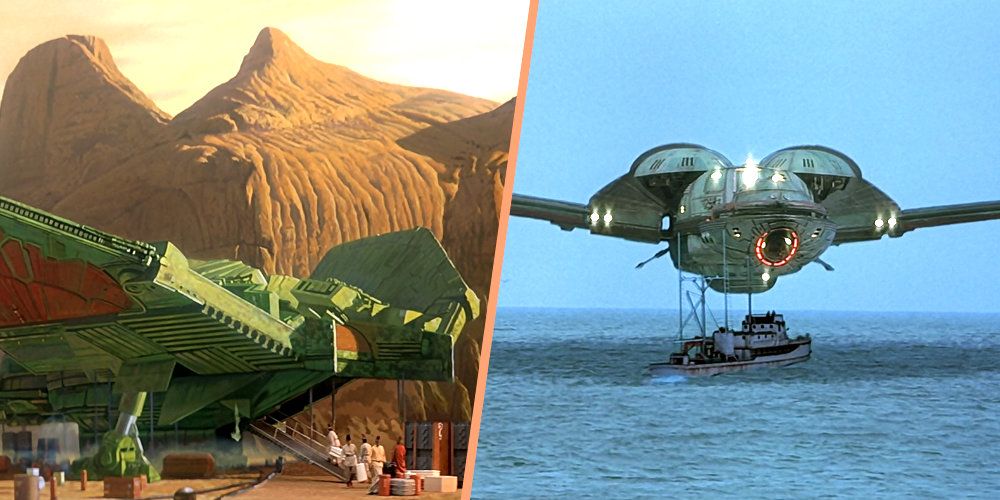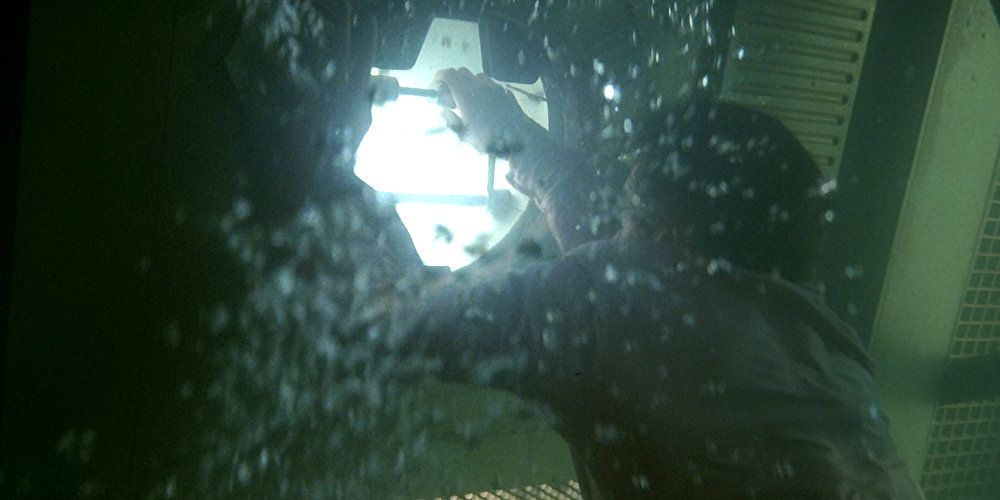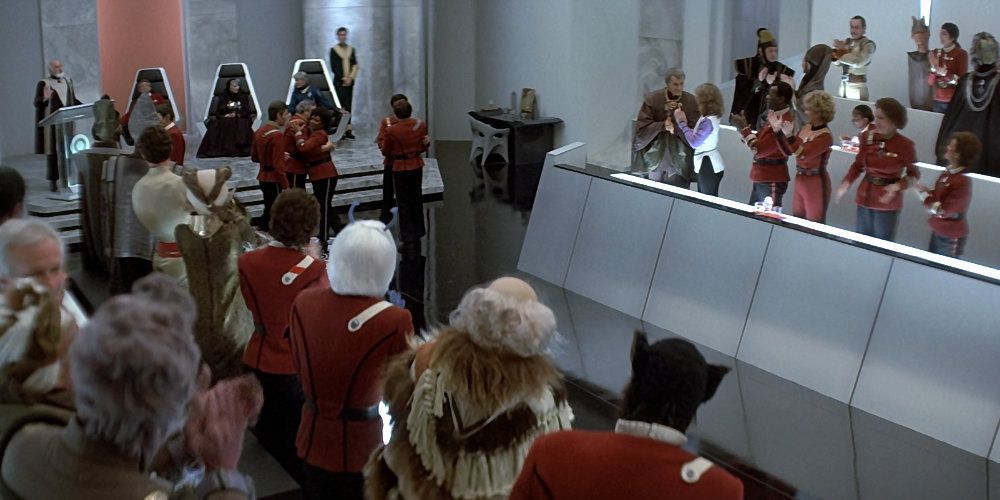Following the bittersweet ending of Star Trek II: The Wrath of Khan and the dark subject matter of its sequel, Star Trek IV was hailed as a respite that brought comedy, laughs, and a heartwarming story to the forefront. Indeed, it's a classic in every sense of the word, and clearly the best of the Trek films according to most fans.
However, no film, no matter how fantastic, is immune from mistakes. Star Trek IV has quite a few plot inconsistencies and goofs that simply don't make any sense. Here are ten of the worst offenders that smudge an otherwise squeaky-clean classic Trek film.
Why Doesn't The Probe Knock Out Reserve Power?
The mysterious and haunting alien probe that heads ominously towards Earth in the beginning act has the ability to knock out the main power of any Federation vessel or starbase that it comes across. This effectively cripples vessels bow to stern and leaves them adrift in space.
However, reserve power seems to kick in, which makes little sense. Wouldn't the probe simply sap whatever backup systems automatically kicked in? For some reason, Starfleet vessels are still able to engage in long-range transmissions and other power-related activities when they should be lifeless husks in deep space.
The Same Clothes, 3 Months Later
Sometimes filmmakers wish to preserve a sense of continuity without realizing how illogical it is. This happens in the first act of Star Trek IV when Kirk and the crew are shown hiding out in exile on the planet Vulcan, following the successful merging of Spock's mind into his newly regenerated body.
Unfortunately, nobody thought to give them a new set of clothes to wear. Three months into exile, the former Enterprise crew is still wearing the exact same threads, and they don't appear particularly polished. Either they did laundry like there's no tomorrow, or someone in the production department didn't think far enough ahead.
How Do You Feel?
Spock engages with a computer on a number of intellectual questions designed to test his I.Q. and cognitive capabilities. He aces the test right up to the final question - "How do you feel?" This puzzles Spock and leaves him in a state of perpetual confusion.
His mother arrives and explains that the computer understands that Spock is half-human, and has taken the emotional equivalent into account. However, Spock has spent his entire life suppressing human emotions, so this question should not have even popped up. Second, Vulcans are not immune to emotions; they merely choose to suppress them. This question should pertain to everyone, or no one.
Why No Federation Extradition?
Vulcan is obviously one of the founding planets in the Federation, so it makes little sense that they'd harbor wanted fugitives. Yet, Kirk and the Enterprise crew are allowed to remain on Vulcan for a full three months without anyone squealing about it. Their actions in Star Trek III would surely have generated massive outrage within Starfleet Command.
Yes, Kirk and the crew did save Spock from the Genesis planet, but they violated every single rule in the book to do so. It was one of Kirk's worst moments, despite being done with the best of intentions. Worse, he destroyed the starship Enterprise to take out a Klingon crew, which could have sparked all-out war with the Federation. It's hard to believe that Vulcan was a non-extradition planet that would have barred Federation security from taking them into custody.
Broken Windows
Kirk and his crew make their return trip to Earth to face judgment for their crimes in the commandeered Klingon Bird of Prey, but they are stopped midway by the Starfleet broadcast warning them to stay away from Earth. After a little hypothesizing, Kirk sends a communique to Starfleet informing them of their plans to time travel back to the 1980s.
The transmission cuts out just before the violent weather patterns in San Francisco cause a glass window to blow out. Technically this should have been transparent aluminum capable of withstanding not only weather damage, but other external threats. In fact, the material becomes a major plot device later in the film.
Slingshot Around The Sun
It's never explained how a slingshot around the sun paves the way for a perfect jump back into the past, but it's one of those sci-fi plot devices audiences are simply supposed to grin and bear.
In order to achieve the breakneck speed required for a time jump, the Klingon ship would need to exceed speeds beyond Warp factor 10. This creates a lot of continuity problems based on subsequent Star Trek lore, particularly the much-hated Voyager episode "Threshold" where the exceeding of Warp 10 produces hyper-evolution within the human body. Second, extreme speeds approaching Warp 10 can tear even advanced 24th-century ships like the Enterprise-D apart due to stress. The actual Star Trek science behind the slingshot maneuver was designed to provide a logical explanation, but it doesn't hold up to scrutiny.
Breaking The Prime Directive In A Big Way?
Star Trek IV was all about lightheartedness, comedy, and old-school movie charm. It's one of the main draws of the film, and why audiences young and old regard it as the best in the series. Unfortunately, it's rather cavalier when it comes to stepping on the toes of established Star Trek lore.
One of these is the violation of the Prime Directive when Scotty and McCoy give Plexicorp the formula for transparent aluminum, a substance that is far beyond 20th-century technology. Attempts have been made to retcon this glaring problem, but it shouldn't have happened in the first place.
The Incredible Shrinking Bird Of Prey
The commandeered Klingon Bird of Prey plays a dual role in Star Trek IV following the destruction of the original Enterprise. Not only does it serve as the temporary travel vessel for Kirk and his crew, but it also becomes the ship that single-handedly saves humanity by transporting two humpback whales back to the 23rd century.
There's a problem, however. The size of the Klingon ship changes several times throughout the movie, most notably near the beginning, and the final act. The differences are jarring, to say the least. Clearly the filmmakers failed to take scale into account, which is why the ship seems to grow to an enormous size by the end of the film. In fact, it's hard to fathom how the ship managed to stay hidden in a small park when it should have required a football stadium.
A Non-Existent Hull Breach
The final act of the film shows the Klingon ship doing a slingshot back around Earth's sun to arrive home in the 23rd century, just as the probe is tearing the planet apart. Damaged and out of control, it ends up careening into the San Francisco harbor near Starfleet headquarters and plunging into the water.
As the ship starts to sink, it begins taking on water which threatens to kill the whales inside. It's a clever plot device designed to craft tension in the final act, but it makes little sense that such a battle-ready vessel would incur a hull breach of that kind, simply by crashing into the water. Nevertheless, it's one of the more memorable starship crashes from the franchise.
All Charges Dropped, Save One
After the threat of Earth's destruction has abated, Kirk and the crew stand trial before a Starfleet tribunal to answer for their crimes in the previous film. In light of events, all charges are dropped except one which ends up giving Kirk exactly what he wanted - a demotion from Admiral to starship Captain.
Yes, it's a lovely way to wrap up a film and bring closure to a very dark story arc, but it makes little sense. The rest of the crew get off scot-free, which is patently ridiculous. They all engaged in mutiny, theft of Starfleet property, and violations of countless Starfleet laws and protocols, including farting around on the Genesis planet which was considered at the time to be an extremely controversial intergalactic hotspot. To get off without so much as a slap on the wrist seems highly... illogical.

